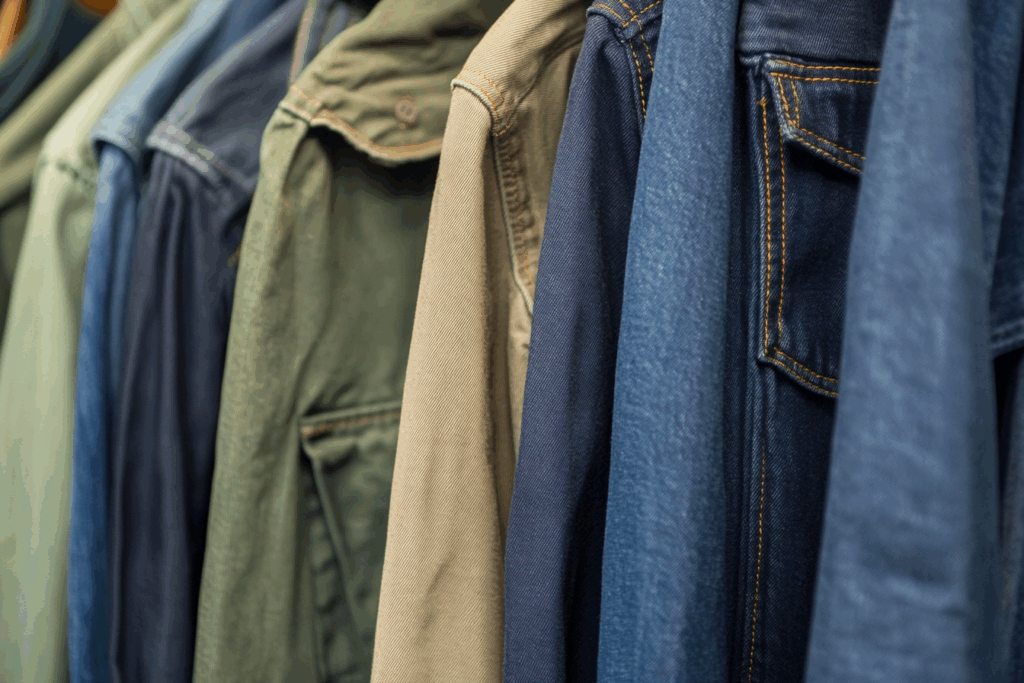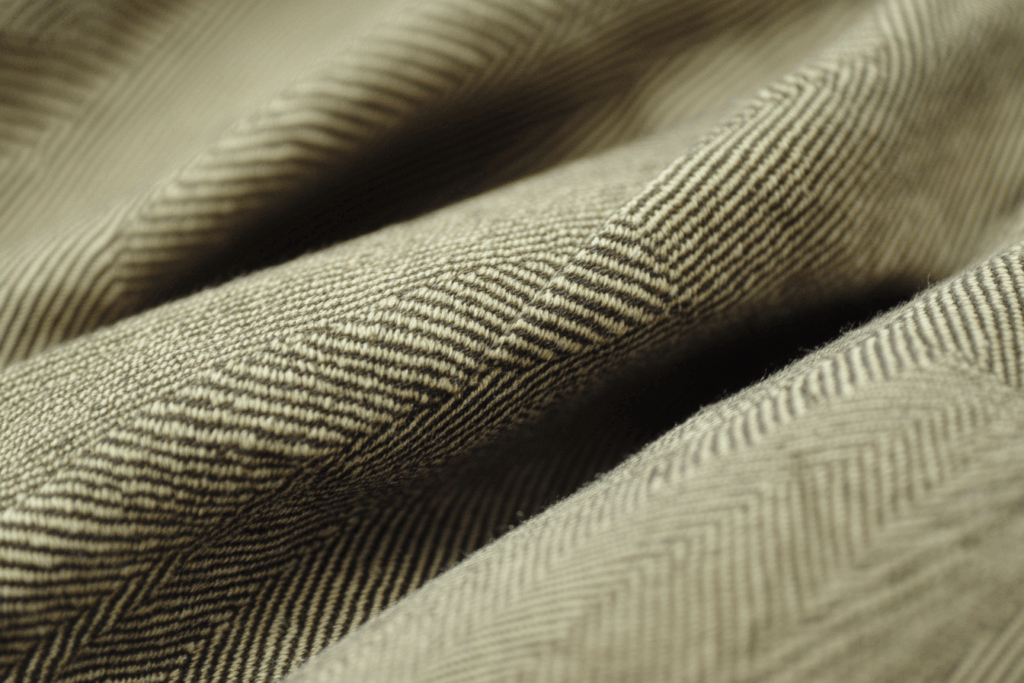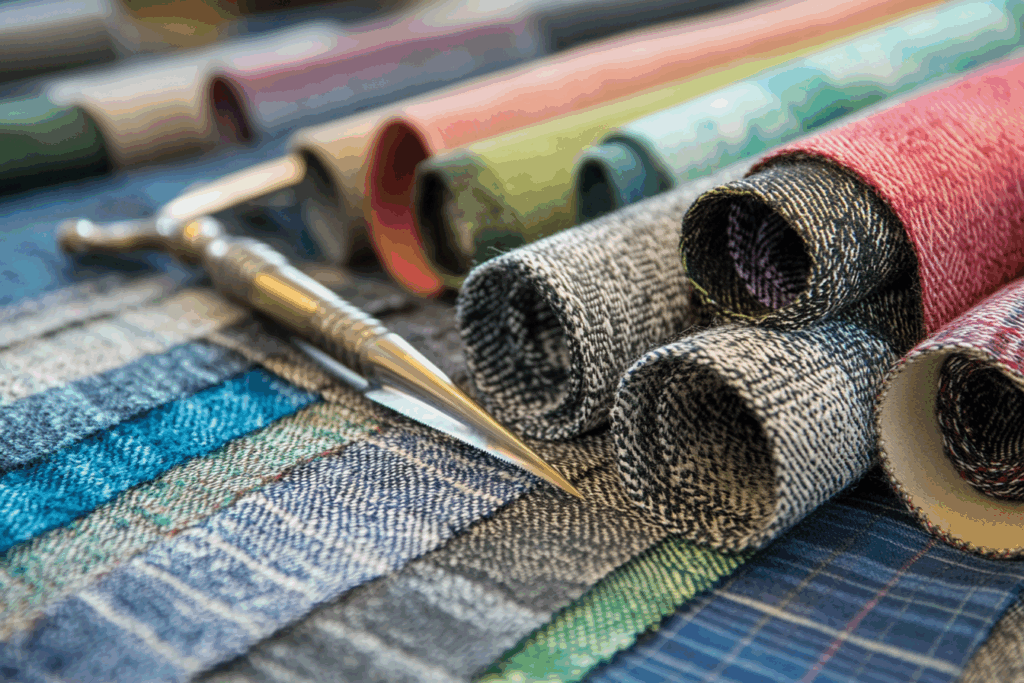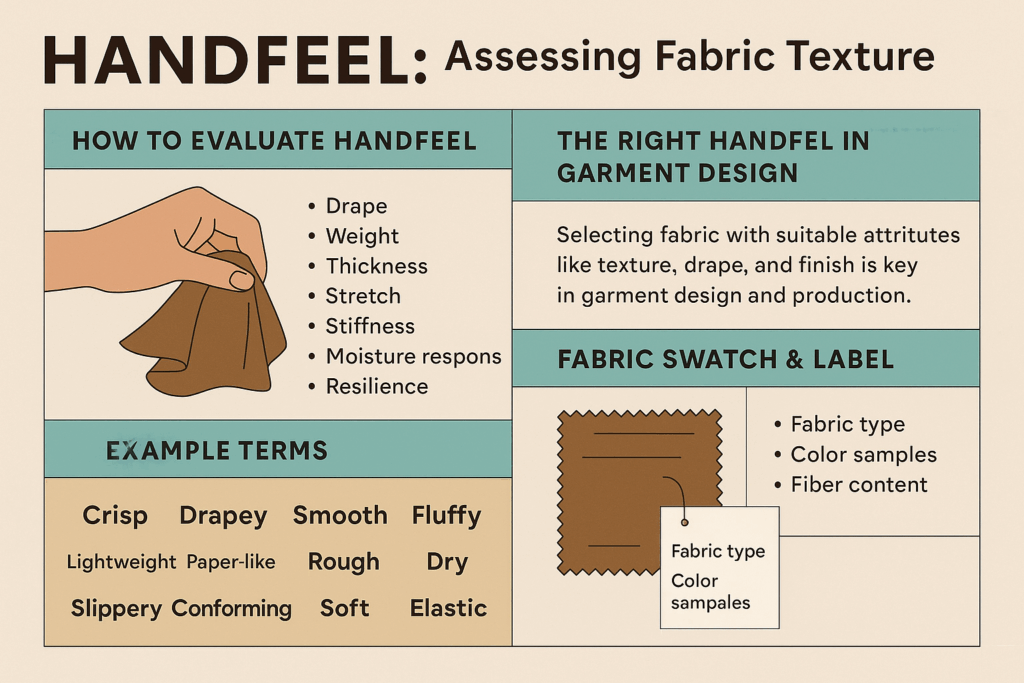Twill Weave: Structure, Characteristics, and Garment Applications
🧵 What Is Twill Weave?
Twill weave is a textile structure characterized by its diagonal rib pattern, formed by a stepped interlacing of warp and weft yarns. Unlike plain weave, twill creates continuous diagonal lines on the fabric surface due to floating yarns—where the yarn skips over two or more threads before interlacing again.
This structure results in increased fabric density, superior durability, and a distinct surface texture, making twill a popular choice for a wide range of garments, especially those requiring strength and structure.
🧷 How Twill Weave Is Constructed
- The interlacing point of yarns shifts over one thread in each row, creating a stepped pattern
- This offset causes the iconic diagonal lines (or twill lines) that define the weave
- Floats (warp or weft skipping over threads) soften the fabric and reduce friction, making it comfortable against the skin
📌 The angle of the twill line can vary depending on the ratio of warp to weft yarns—steeper twill indicates more warp dominance.
🔍 Key Characteristics of Twill Weave
| Property | Description |
|---|---|
| Visual Texture | Diagonal lines or ribs (visible on the front) |
| Durability | High yarn density → strong, long-lasting fabric |
| Elasticity | Moderate natural elasticity, especially on the bias |
| Softness | Enhanced by float yarns, more comfortable than plain weave |
| Reversibility | Front and back sides differ in appearance |
| Wrinkle Resistance | Better than plain weave due to softer structure |
🧵 Common Twill Weave Fabrics
| Fabric Type | Description | Use Case |
|---|---|---|
| Coarse twill cotton | Heavy-duty cotton with clear twill lines | Workwear, pants |
| Khaki twill | Military-style twill, often with a silk finish | Uniforms, casual jackets |
| Houndstooth | A patterned twill using contrast yarns | Suits, skirts, blazers |
| Denim | Warp-faced cotton twill with white weft and indigo warp | Jeans, jackets |
| Gabardine | Steep twill with a smooth finish | Trousers, trench coats |


🌀 Herringbone Weave: A Twill Variation
Herringbone is a decorative variation of twill weave:
- Constructed by alternating the direction of twill at fixed intervals
- Results in a zigzag or chevron pattern
- Mimics the spine of a herring fish—hence the name
- Often uses different colored yarns for visual contrast
- Commonly used in men’s and women’s suits, coats, and outerwear
🎯 Herringbone offers the durability of twill with a more elegant, dressy visual appeal.
👗 Advantages of Twill Weave in Fashion
✔️ Stronger and thicker than plain weave fabrics
✔️ Good wrinkle resistance and durability
✔️ Improved drape and flexibility, ideal for tailoring
✔️ Holds structure well in suits and pants
✔️ Available in many weights and finishes
📌 Summary
Twill weave is one of the most versatile and widely used fabric structures in the apparel industry. With its diagonal rib pattern, soft handfeel, and excellent durability, it strikes a balance between structure and comfort. Whether in workwear, denim, suiting, or outerwear, twill offers both functionality and fashion appeal. Its elegant variant, the herringbone weave, adds visual interest and is a favorite for tailored garments.



